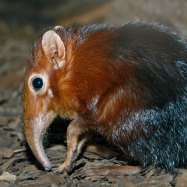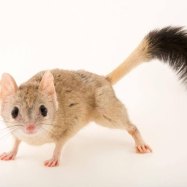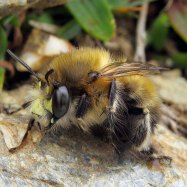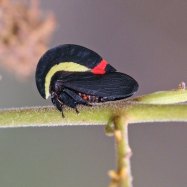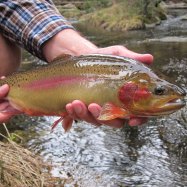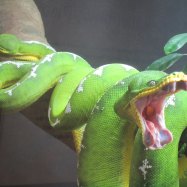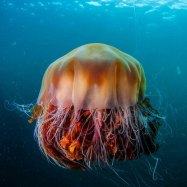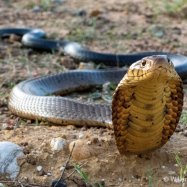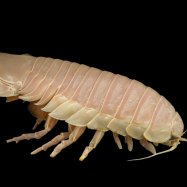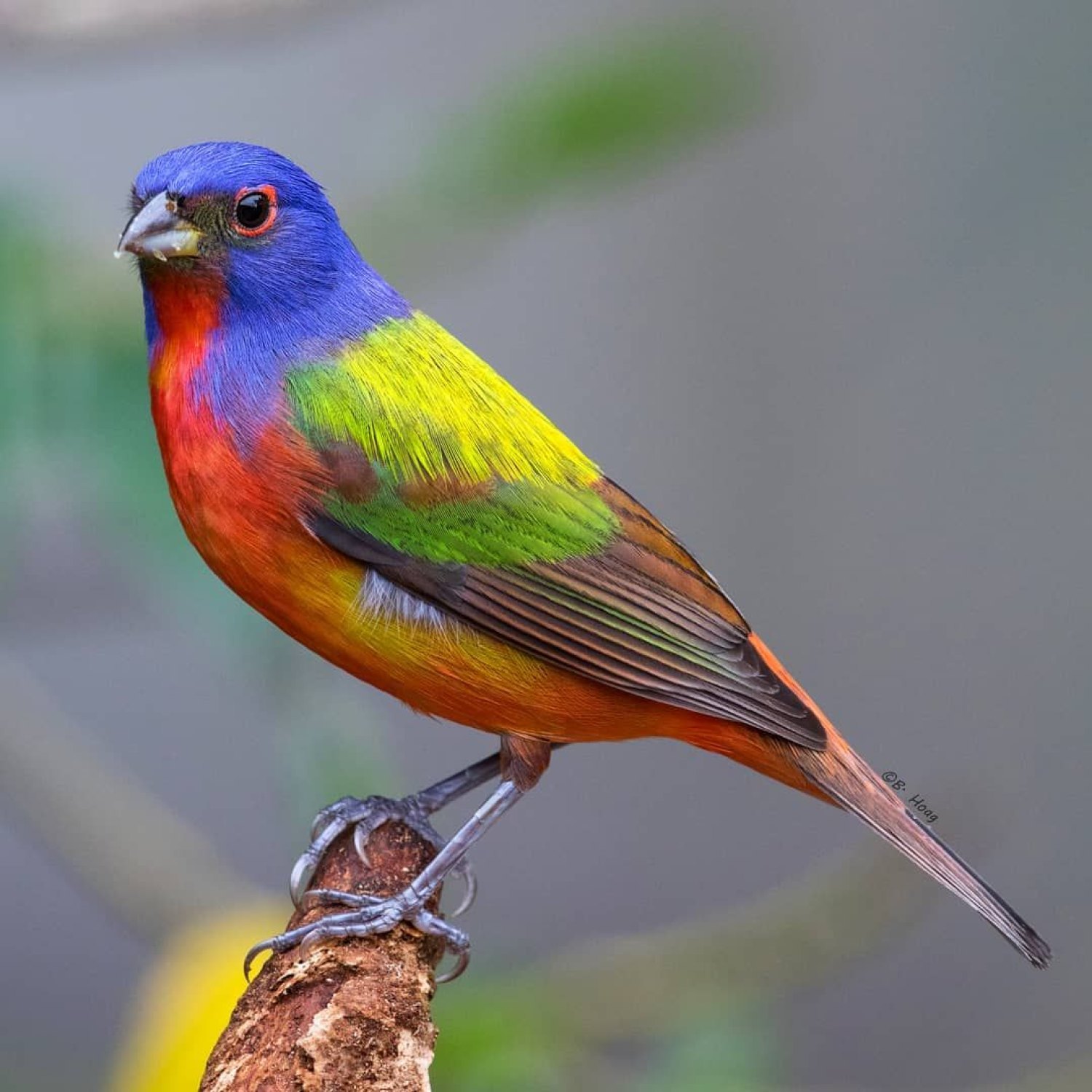
Painted Bunting
12-14 centimeters
Meet the Painted Bunting, a small but vibrant bird with a stocky build and short tail. Found in North America, they are part of the Cardinalidae family. At just 12-14cm in length, these colorful birds are a sight to behold in the wild. Keep an eye out for them on your next nature walk! #PaintedBunting #NorthAmerica #BirdWatching
Animal Details Summary:
Common Name: Painted Bunting
Kingdom: Animalia
Habitat: Woodlands, thickets, and brushy areas
The Beautiful and Fascinating Painted Bunting
From the vibrant colors to the enchanting songs, birds have always been a source of fascination for humans. One such bird that captures the hearts of many is the Painted Bunting, also known as Passerina ciris in the scientific community. This small but striking bird is native to North America and is a delight to witness in the wild. In this article, we will explore the features and characteristics of the Painted Bunting that make it stand out in the avian world Painted Bunting.The Kingdom, Phylum, Class, and Order of Painted Bunting
Before delving into the specifics of this beautiful bird, let's first understand where it stands in the classification system. The Painted Bunting belongs to the Animalia kingdom, which encompasses all animals, including humans. It belongs to the Chordata phylum, which consists of animals with a backbone or spinal cord. The bunting is then classified under the class Aves, which includes all bird species. Finally, it belongs to the Passeriformes order, which is the largest order of birds and includes more than half of all avian species.The Family and Habitat of Painted Bunting
The Painted Bunting falls under the Cardinalidae family, which comprises other colorful birds such as cardinals, grosbeaks, and tanagers. This family is found in North and South America and is named after the bright red color of the Northern Cardinal. As for the habitat, these birds prefer woodlands, thickets, and brushy areas, where they can find an abundance of seeds and insects. They are often found in open fields and edges of forests, making it easy to spot them during birdwatching trips Penguin.Feeding Method of Painted Bunting
The Painted Bunting is an omnivorous bird, meaning it consumes both plant and animal matter. Their diet primarily consists of seeds, fruits, and insects, making them an important part of the ecosystem. They have strong, conical beaks that are suitable for cracking open tough seeds, and their sharp eyesight helps them easily spot insects for their meals. They may also occasionally feed on nectar from flowers.Geographical Distribution of Painted Bunting
The Painted Bunting is a migratory bird, meaning it travels to different locations depending on the season. During the breeding season, they can be found in the southern and eastern parts of the United States, as well as in parts of Mexico and Central America. When winter sets in, they migrate to southern Florida, the Caribbean, and Mexico. These birds are known to travel long distances, some even covering up to 2,500 miles during their migration.Country of Origin and Location of Painted Bunting
The country of origin of the Painted Bunting is the United States, specifically the southern and eastern regions. However, its natural habitat also includes parts of Mexico and Central America. As mentioned earlier, they migrate to different locations during different seasons, making their location highly varied throughout the year.Animal Coloration and Body Shape of Painted Bunting
One of the most striking features of the Painted Bunting is its colorful plumage. The males are particularly eye-catching with their bright blue, green, and red feathers, earning them the nickname "nonpareil" which means "without an equal" in French. The females, on the other hand, have more muted colors with green and yellow feathers. This difference in coloration between males and females is called sexual dimorphism, and it helps the birds attract mates and defend their territories.In addition to their vibrant colors, the Painted Bunting also has a small body with a stocky build and a short tail. This allows them to quickly move through dense vegetation, making it easier for them to forage for food and escape predators. They also have strong legs and feet, suitable for perching on branches and grasping onto their food.
The Length of Painted Bunting
On average, the Painted Bunting measures between 12-14 centimeters in length, with a wingspan of 20-23 centimeters. This makes them a relatively small bird compared to other species, but their beauty and charm make up for their size.The Fascinating Behavior of Painted Bunting
Aside from their striking appearance, the Painted Bunting also exhibits some fascinating behavior that sets them apart from other birds. Here are some of the unique behaviors of these colorful creatures:Mating and Nesting
Painted Buntings are monogamous birds, meaning they form a bond with one mate for life. They start breeding in early spring, and males use their vibrant plumage and beautiful songs to attract a mate. Once a pair has formed, they build a nest together, which is usually located in a dense brush or low tree branch. The female lays around 3-4 eggs, and both parents take turns incubating them for two weeks. Once the eggs hatch, both parents are responsible for feeding and caring for the young until they are ready to leave the nest.Singing and Vocalization
The songs of Painted Buntings are a defining characteristic of their species. Males, in particular, have a unique and distinct song that they use to defend their territory and attract mates. Their song is a series of clear, high-pitched notes that can be heard from a distance. In contrast, females have a softer, more delicate tune. Aside from songs, Painted Buntings also communicate through a variety of calls, including alarm calls to alert other birds of potential threats.Migratory Behavior
As mentioned earlier, Painted Buntings are migratory birds, and their movements are highly dependent on seasonal changes. The timing and duration of their migration differ among populations, but usually, they start heading south towards warmer climates in October and return to their breeding grounds in March.Conservation and Threats to Painted Bunting
Despite its vibrant colors and unique characteristics, the Painted Bunting is facing a decline in its population. The main threats to the species include habitat loss due to urbanization and agriculture, as well as collisions with buildings and communication towers during migration. Another factor that affects their population is the illegal trapping of these birds for the illegal pet trade.To protect the Painted Bunting, it is crucial to conserve their habitats by preserving woodlands and avoiding the use of pesticides that can harm their food sources. Educating the public about the value and beauty of these birds can also help mitigate the illegal pet trade. In addition, regulations on communication towers and bird-friendly building strategies can help reduce collision-related deaths.
In Conclusion
The Painted Bunting is a truly remarkable bird, with its colorful plumage, enchanting songs, and unique behaviors. Its striking appearance and fascinating qualities make it a beloved species among bird enthusiasts, but its declining population calls for greater conservation efforts. By understanding and appreciating this magnificent creature, we can help ensure its survival for generations to come. So let us all take a moment to marvel at the beauty of the Painted Bunting and do our part in protecting it for the future.

Painted Bunting
Animal Details Painted Bunting - Scientific Name: Passerina ciris
- Category: Animals P
- Scientific Name: Passerina ciris
- Common Name: Painted Bunting
- Kingdom: Animalia
- Phylum: Chordata
- Class: Aves
- Order: Passeriformes
- Family: Cardinalidae
- Habitat: Woodlands, thickets, and brushy areas
- Feeding Method: Omnivorous
- Geographical Distribution: Southern and eastern parts of the United States, Mexico, and Central America
- Country of Origin: United States
- Location: North America
- Animal Coloration: Males are brightly colored with blue, green, and red plumage, while females have a more dull green and yellow plumage
- Body Shape: Small bird with a stocky build and short tail
- Length: 12-14 centimeters
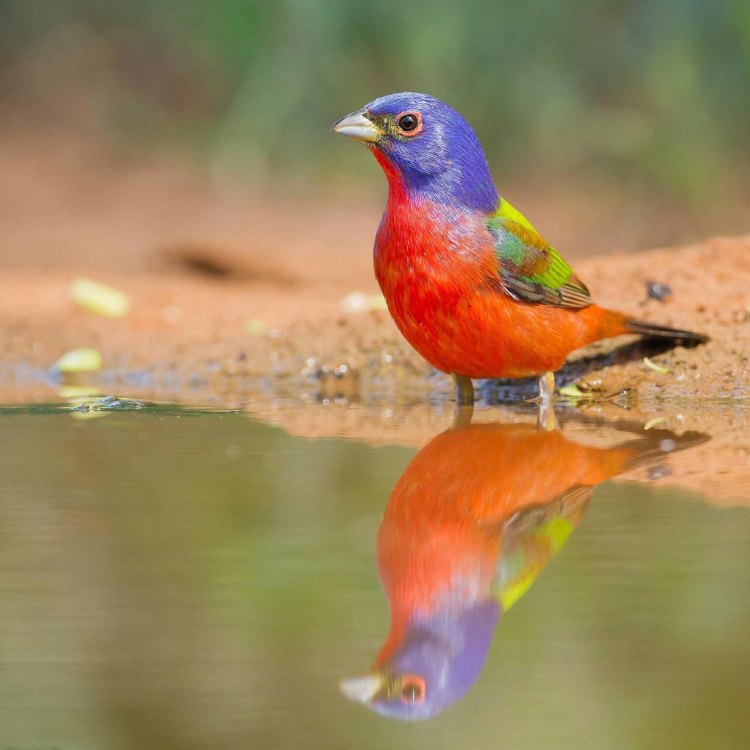
Painted Bunting
- Adult Size: Small
- Average Lifespan: 4-6 years
- Reproduction: Sexual
- Reproductive Behavior: Monogamous
- Sound or Call: Musical and varied song
- Migration Pattern: Migratory
- Social Groups: Solitary or in small groups
- Behavior: Energetic and agile
- Threats: Habitat loss, predation, and capture for the pet trade
- Conservation Status: Least Concern
- Impact on Ecosystem: Seed dispersal
- Human Use: Considered a popular bird for birdwatchers
- Distinctive Features: Brightly colored plumage
- Interesting Facts: Males undergo a complete molt after breeding season and resemble females during the winter months
- Predator: Birds of prey, domestic cats
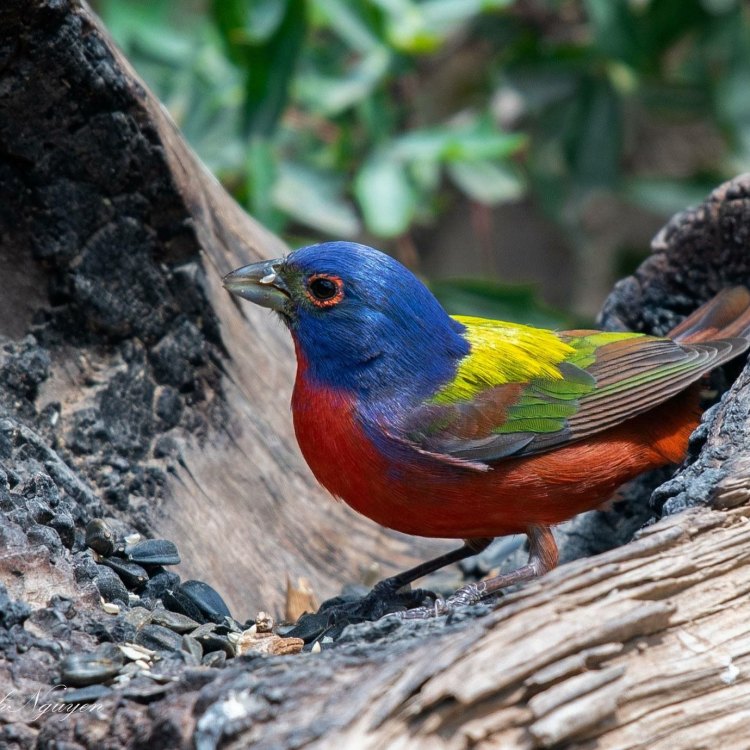
Passerina ciris
The Enigmatic Beauty of the Painted Bunting: A Unique Species
The world is full of fascinating creatures, each with their own distinctive features and behaviors. Among these stands a small but vibrant bird, the painted bunting (Passerina ciris). This dainty bird, with its strikingly colorful plumage, captures the attention of anyone lucky enough to spot it in its natural habitat. However, there is much more to this bird than meets the eye PeaceOfAnimals.Com.Painted buntings are small birds, measuring about 5 to 5.5 inches in length and weighing only half an ounce. Their small size is not the only thing that makes them unique; their lifespan and reproductive behavior are also quite intriguing. On average, painted buntings have a lifespan of 4 to 6 years in the wild, with some individuals living up to 9 years. This relatively short lifespan is due to various threats that they face, both natural and human-induced.
Speaking of reproduction, painted buntings have a sexual reproductive behavior, meaning they require a mate to reproduce. However, what sets them apart is their monogamous nature. Once they find a suitable mate, they remain faithful to each other throughout the breeding season. These colorful birds are known to be devoted partners, sharing the duties of building nests, incubating eggs, and caring for their young Pitsky.
One of the most alluring aspects of painted buntings is their melodious song. These birds are known for their musical and varied songs, which can be heard most prominently during the breeding season. Their songs are not just beautiful but also play a vital role in their reproductive behavior, as they use them to attract potential mates and establish territories. Their songs can also differ depending on the region, as different populations have slightly different dialects.
Another interesting characteristic of these birds is their migration pattern. Unlike many other birds, painted buntings do not migrate long distances. Instead, they are considered "short-distance migrants" as they only travel to the southern United States and parts of Mexico during the winter months. This migratory pattern is believed to be related to their diet, as they primarily feed on seeds, which can be scarce in the colder northern regions.
Painted buntings are primarily solitary birds, but they can also be found in small groups, especially during migration. Their behavior has been described as energetic and agile, as they are often seen flitting between branches and foraging for food. This behavior is not only charming but also crucial for their survival, as they need to be quick and agile to escape predators and find food.
Unfortunately, these brightly colored birds face numerous threats in the wild, which have led to declines in their population. One of the main threats to painted buntings is habitat loss, as their preferred habitats, such as shrubby areas and overgrown fields, are being cleared for development. They are also vulnerable to predation from birds of prey and domestic cats, which are both significant predators of small birds. In some areas, where painted buntings are still captured for the pet trade, this also poses a threat to their numbers.
Despite these threats, painted buntings are currently listed as "Least Concern" on the IUCN Red List of Threatened Species. This is mainly due to their widespread distribution and relatively stable population. However, conservation efforts are still essential to ensure their continued survival, especially with the growing threats of habitat loss and climate change.
Aside from their beauty and contributions to the ecosystem, painted buntings also hold cultural significance. They are highly prized by birdwatchers, who consider them a popular and challenging bird to spot and photograph. They have also been featured in various forms of art and literature, highlighting their unique and alluring appearance.
One of the most distinctive features of these birds is their brightly colored plumage, which makes them stand out among other birds. The males, with their vibrant blue, green, and red feathers, are particularly eye-catching, earning them the nickname "nonpareil" meaning "without equal" in French. On the other hand, females have more muted colors, with shades of green and yellow, helping them blend into their surroundings during nesting season.
Interestingly, male painted buntings transform after the breeding season is over. They undergo a complete molt, shedding their colorful breeding plumage and donning duller feathers, similar to those of the females. This change in appearance is thought to serve as camouflage against predators during the winter months when they are most vulnerable.
Apart from their role in attracting mates, their brightly colored plumage also serves another important purpose - seed dispersal. As they forage on seeds, painted buntings are known to inadvertently scatter seeds around, aiding in the growth and regeneration of plant species. This phenomenon highlights the important role that these small birds play in maintaining a healthy ecosystem.
In conclusion, painted buntings are a unique and enigmatic species, with their small size, monogamous behavior, and vibrant plumage setting them apart from other birds. However, their beauty and charm also make them vulnerable to various threats, emphasizing the need for conservation efforts. These birds not only add to the beauty of the natural world but also play a crucial role in maintaining a balanced ecosystem. Let us appreciate and protect these magnificent creatures for future generations to come.
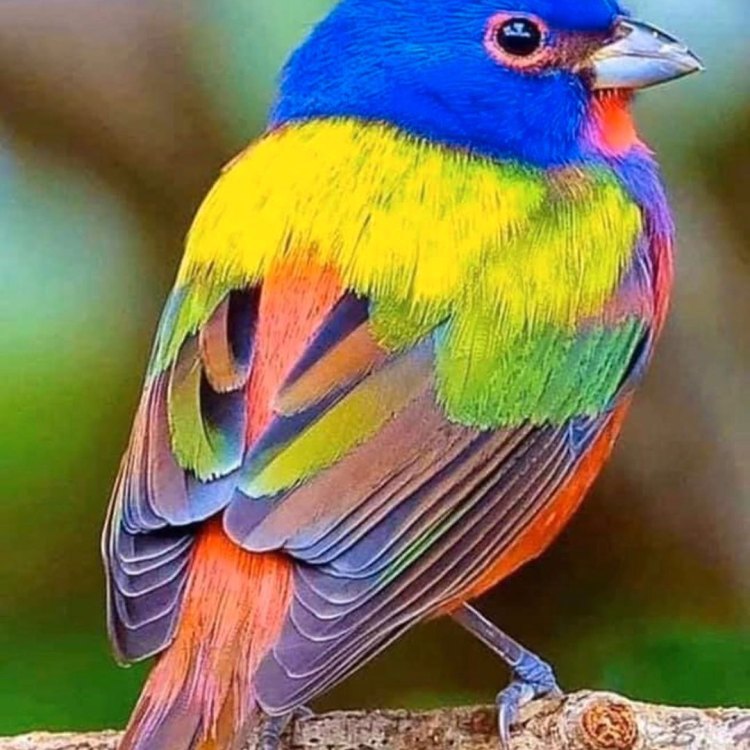
The Beautiful and Fascinating Painted Bunting
Disclaimer: The content provided is for informational purposes only. We cannot guarantee the accuracy of the information on this page 100%. All information provided here may change without prior notice.

